Birds of Hawaii – Top 25 Bird
Birds of Hawaii? Hawaii is a popular tourist destination for people from all over the world. Its wonderful tropical environment, clean beaches, varied topography, and exceptional position also make Hawaii a top birding destination. The Hawaiian islands are home to over 350 bird species, including 59 endemic species unique to our planet.
While not native to Hawaii, introduced birds from North America, South America, Asia, Africa, and Australia provide birders the chance to observe species from all over the world in one amazing place. There are many more spectacular birds to see in the Aloha State after this top 25 to look out for.
Laysan Albatross
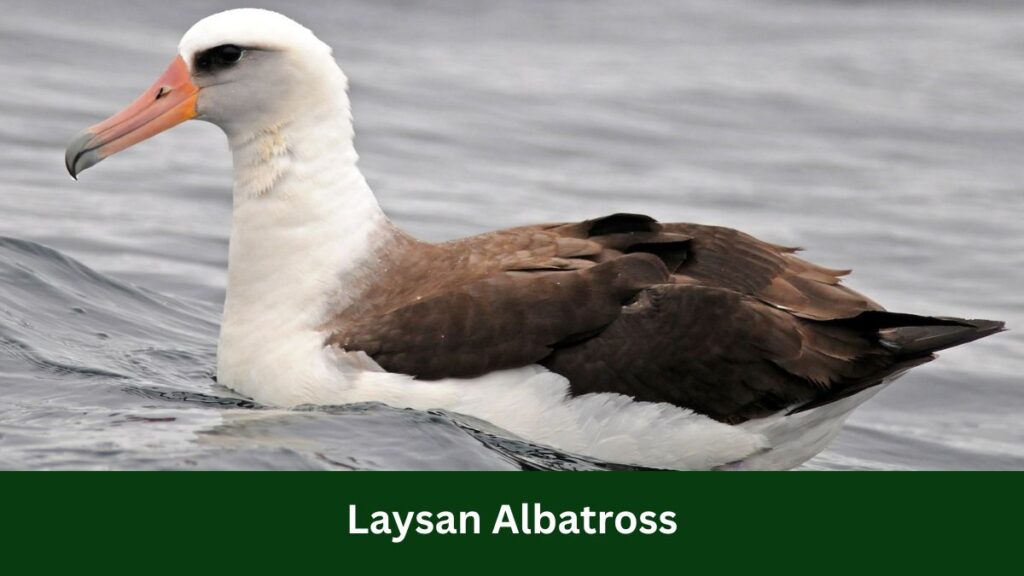
The finest spots to observe seabirds are islands in the middle of the ocean, and Hawaii is a terrific area to witness the Laysan albatross (Phoebastria immutabilis). These enormous, spectacular birds breed at ideal locations on Oahu and other islands and on Kauai at Kilauea Point National Wildlife Refuge, where they have a nearly 80-inch wingspan. Wisdom, the oldest banded wild bird in the world, survived to be more than 66 years old. The Laysan albatross is particularly well known for having exceptional longevity.
Japanese White-Eye
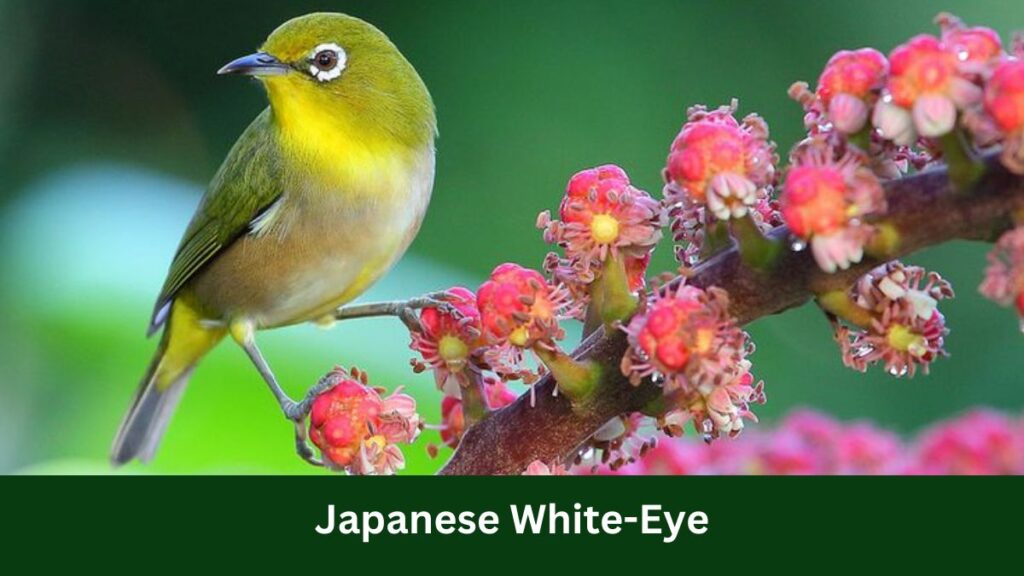
The Japanese white-eye (Zosterops japonicus), which was first brought to Hawaii in 1927 from its native Japan, is now common throughout the islands and is frequently spotted in urban and suburban settings. These little birds forage and migrate in tiny flocks, and as they are omnivorous, they eat a variety of things like fruit, insects, and nectar. These easily recognizable birds have bright white eye rings and yellow-green plumage, which serve as clear, identifiable field markers.
Red-Crested Cardinal
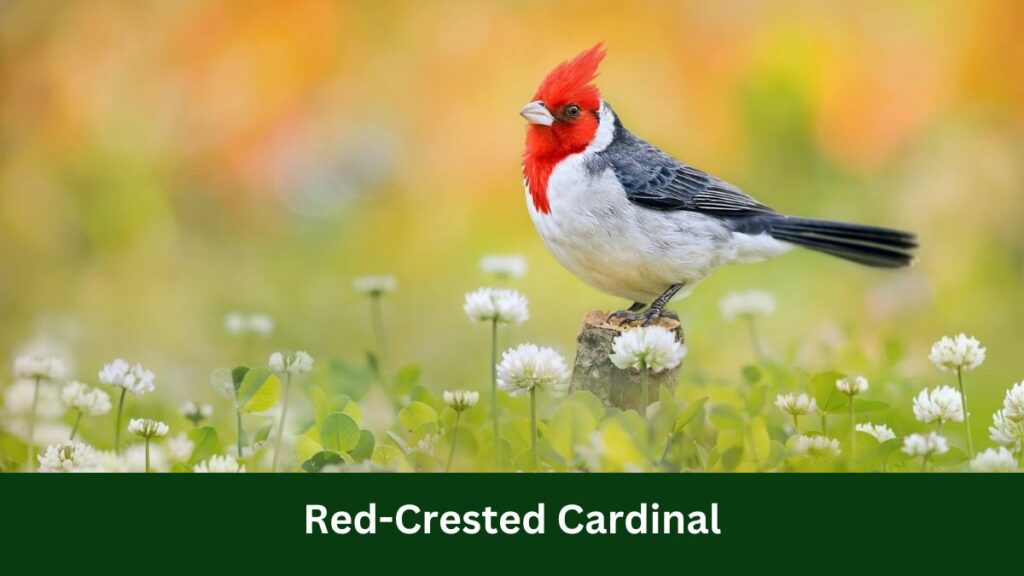
The red-crested cardinal (Paroaria coronata), another introduced bird, was brought to Hawaii from South America as a captive bird in the 1930s. They are easily spotted on golf courses, hotel grounds, and city parks since these songbirds are cosmopolitan and at home in cities. Red-crested cardinals are common throughout most of the Hawaiian Islands but absent from the Big Island. They usually migrate in pairs or small flocks.
Rose-Ringed Parakeet
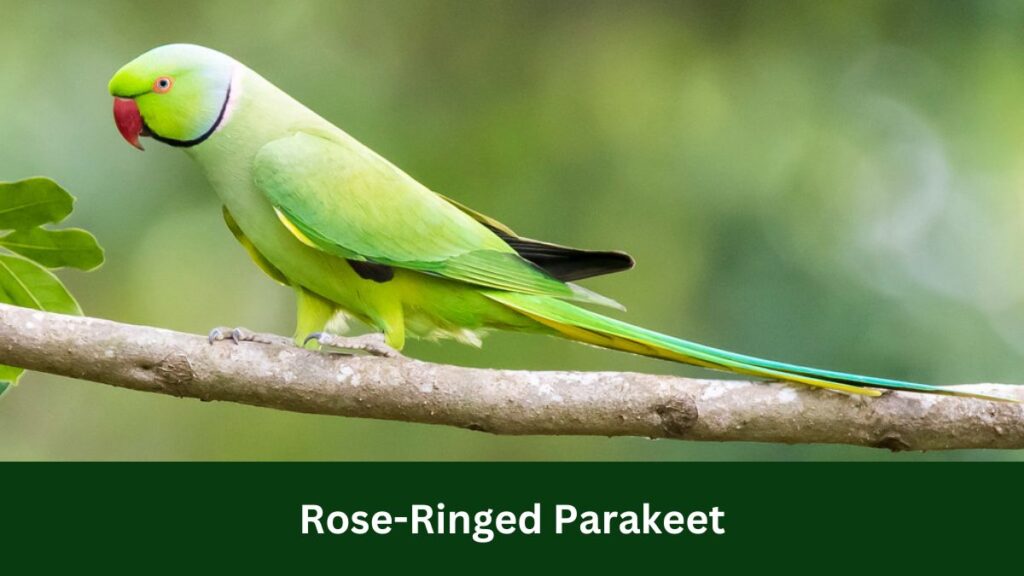
The rose-ringed parakeet (Psittacula krameria), the first parrot to be brought to Hawaii, is a native of Africa and India. However, it is now quite simple to view Oahu and Kauai, especially in botanical gardens or on the campus of the University of Hawaii. These charming long-tailed parrots will also visit yards, but they aren’t usually welcome visitors because of their loud voices. They wander in tiny family groups and favor royal palm palms.
Hawaiian Petrel
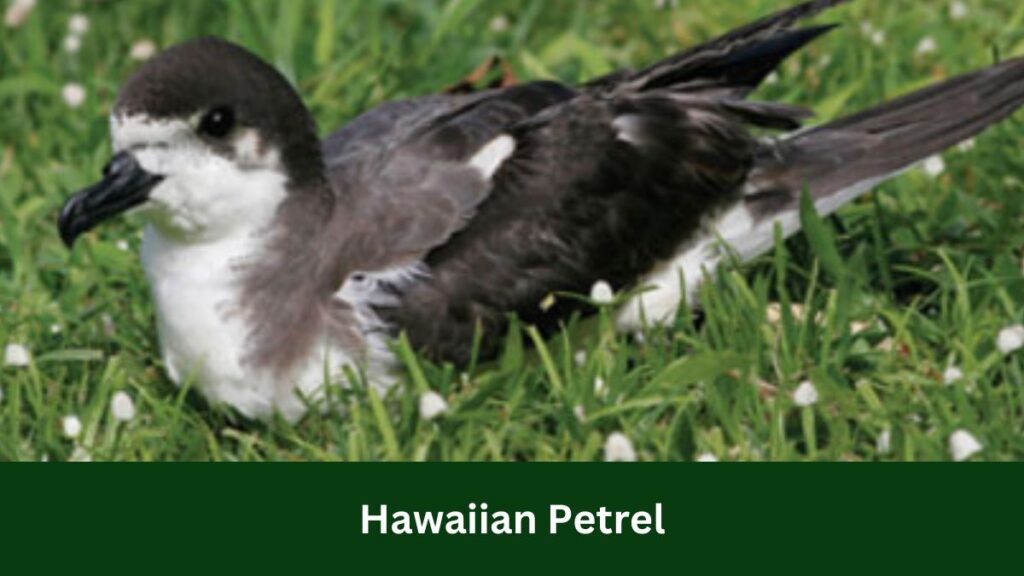
An endangered seabird found exclusively in Hawaii, the Hawaiian petrel (Pterodroma sandwichensis) is threatened by feral cats that disturb its breeding areas. Although these birds are particularly vulnerable to exotic predators because they nest in burrows, conservation measures are being made to safeguard the species. These petrels have an odd groaning sound that can be used to identify them while out at sea because it can be heard not just from the breeding places but also when the birds are flying.
White-Rumped Shama
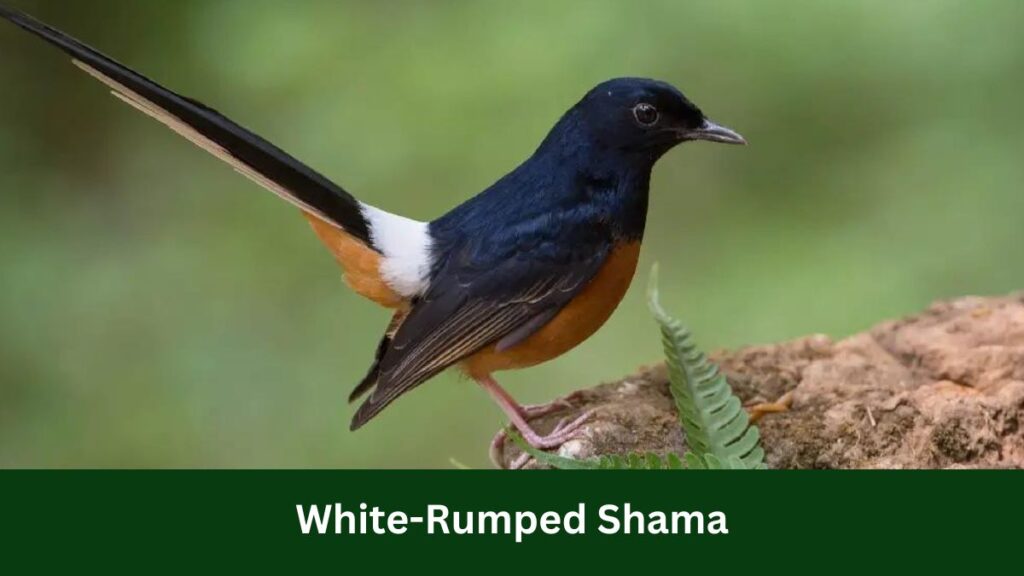
The unusual long-tailed songbird known as the white-rumped shama (Copsychus malabaricus) has striking black, orange, and white coloring. These birds arrived in Hawaii from Malaysia in 1931 and are now firmly established there. They are easy to observe in forested areas, parks, botanical gardens, and occasionally even on beaches where streams transport riparian habitat to the coast. The song of these birds makes them popular visitors in many places.
Zebra Dove: Birds of Hawaii
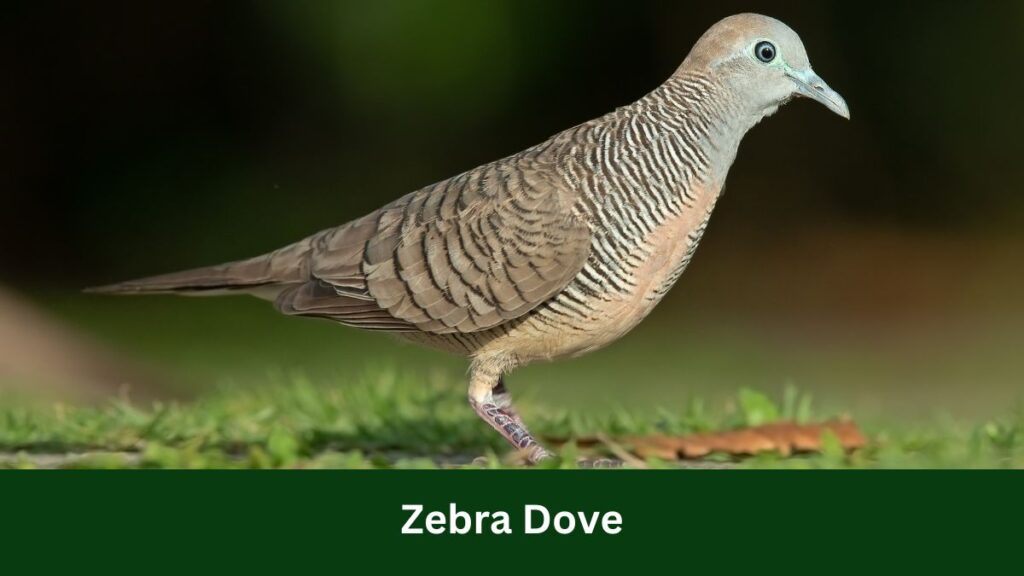
The zebra dove (Geopelia striata), often known as the barred dove, made its way from Australia to Hawaii in 1922. These little doves can be quite friendly. And will often approach people in cafes or outdoor seating areas in search of food scraps. In addition to other lowland environments, they are common in urban and suburban regions. They can be distinguished from other doves in Hawaii. Such as the mourning dove and spotted dove, by their strongly barred plumage, which gives them a characteristic scaly appearance.
‘I’iwi: Birds of Hawaii
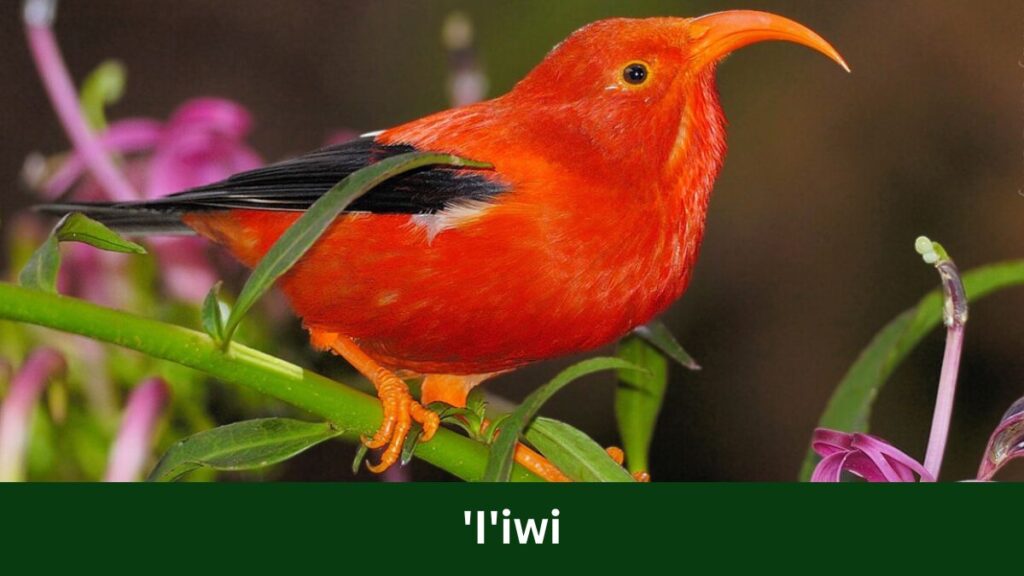
The native honeycreeper known as “I’iwi” is one of the most sought-after birds to view in Hawaii. And is only found in forests at high elevations. Though lucky birders can still catch the bird on Molokai and Oahu in the correct environment, this brilliant red bird with its sickle-like bill is easiest to observe on Kauai, Maui, and the Big Island. The ‘I’iwi is drawn to lobelia plants and the abundant nectar in their blooms in particular. But it will also visit other flowers with abundant nectar and may even be found at nectar feeders.
Red-Whiskered Bulbul

The red-whiskered bulbul (Pycnonotus joyous), which was first imported to Oahu in 1965 from its native. Asian habitat that includes China, India, and Malaysia, is a striking bird with striking colors and a distinctive face pattern. However, because of its pestilential behaviors, it is not as welcome in many parts of Hawaii. These birds are rather common on Oahu, but they don’t pose as much of a threat as the red-vented bulbul. Which was brought to the island in 1966 and is even more pervasive and destructive.
Red-Tailed Tropicbird: Birds of Hawaii
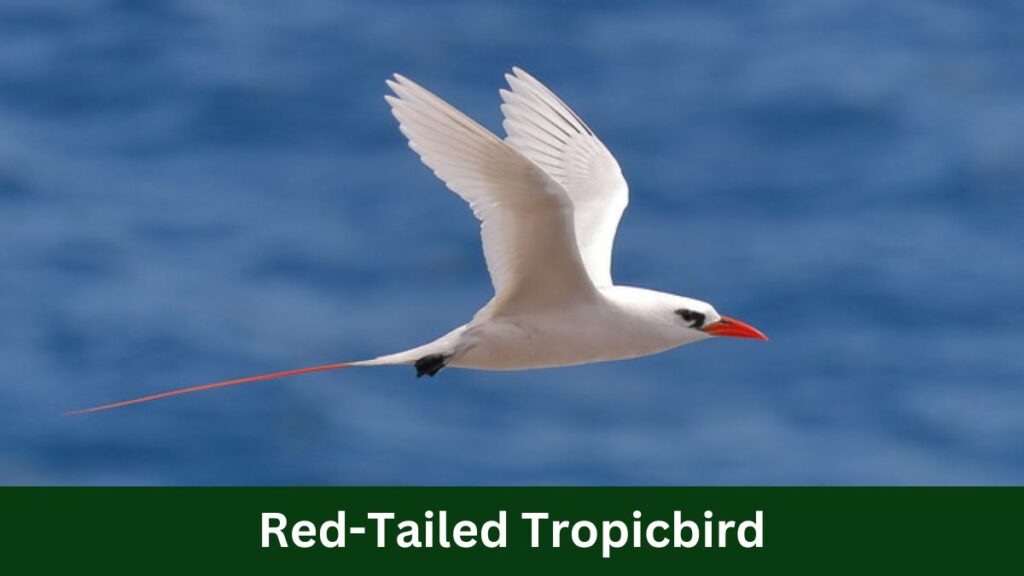
When the red-tailed tropicbird (Phaethon rubricauda) near Hawaii displays mating activity between March and October. Its stunning courtship flights, which involve wheeling, diving, and flying backward, are not to be missed by birders. These birds can occasionally be observed on other islands, however, they are most frequently seen close to Kauai and Oahu. Birdwatchers should be careful not to mistake them for red-billed or white-tailed tropicbirds. Both of which are also commonly seen in Hawaii.
Yellow-Fronted Canary: Birds of Hawaii
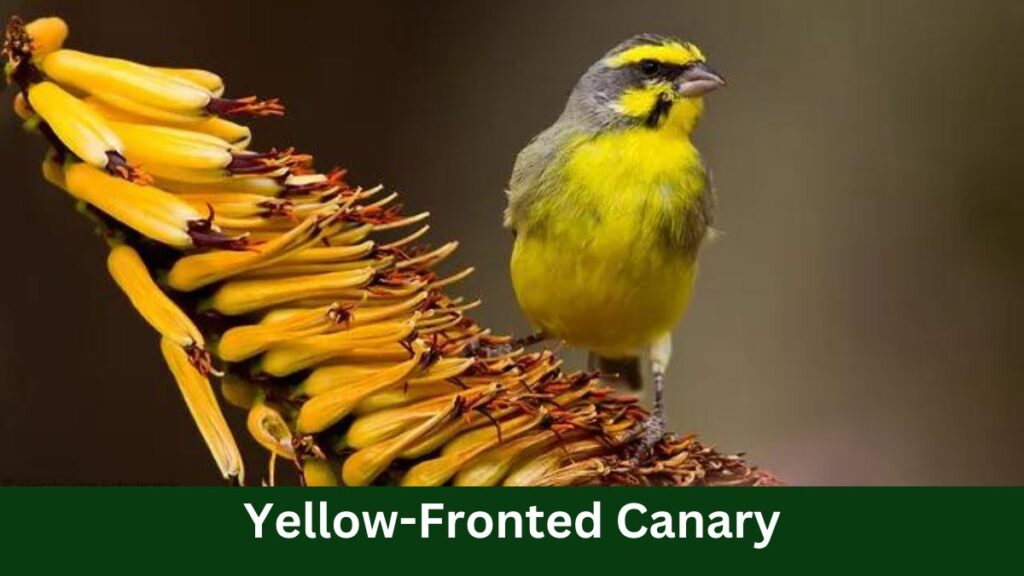
The yellow-fronted canary (Serinus Mozambique), a bird native to Africa, was first brought to Hawaii in the 1960s. Today, Oahu and the Big Island are the best places to see these birds with striking face markings (look for the X-shape if the bird is staring directly at you), and there are particularly friendly populations near the Honolulu Zoo. Yellow-fronted canaries often visit feeding stations in yards and gardens due to their varied diet of seeds and insects.
Hawaii Elepaio
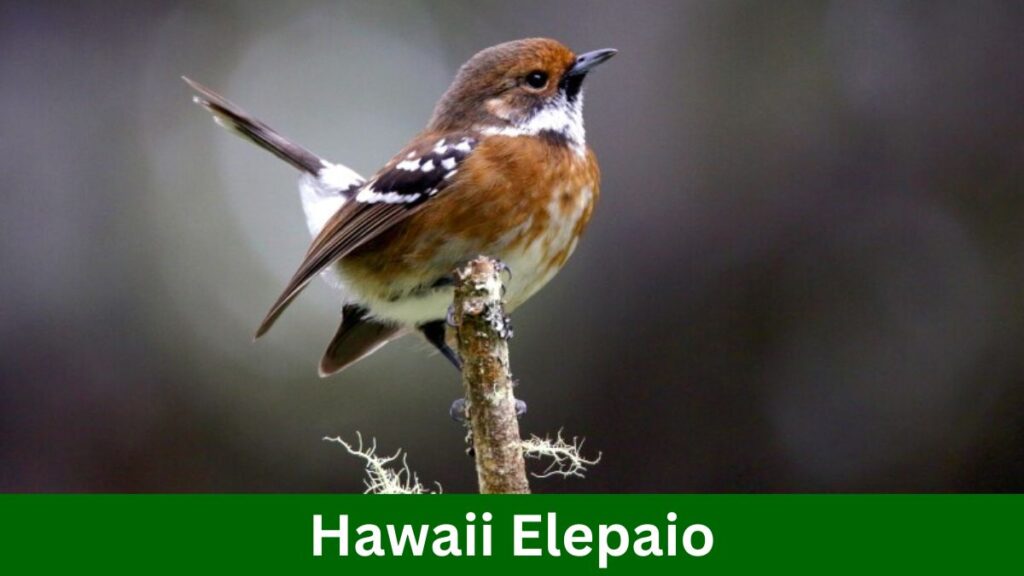
The Hawaiian elepaio (Chasiempsis sandwiches), one of three native elepaio species in Hawaii, is a woodland bird that frequently remains unnoticed. Due to their distinctive markings, which easily blend in with dappled shade and shadows, they might be difficult to notice. Although they occasionally stray to lower areas, these birds are normally found at higher woodland heights. They have outgoing, inquisitive attitudes and frequently heed calls to provide birders with exceptional and unforgettable views.
Palila
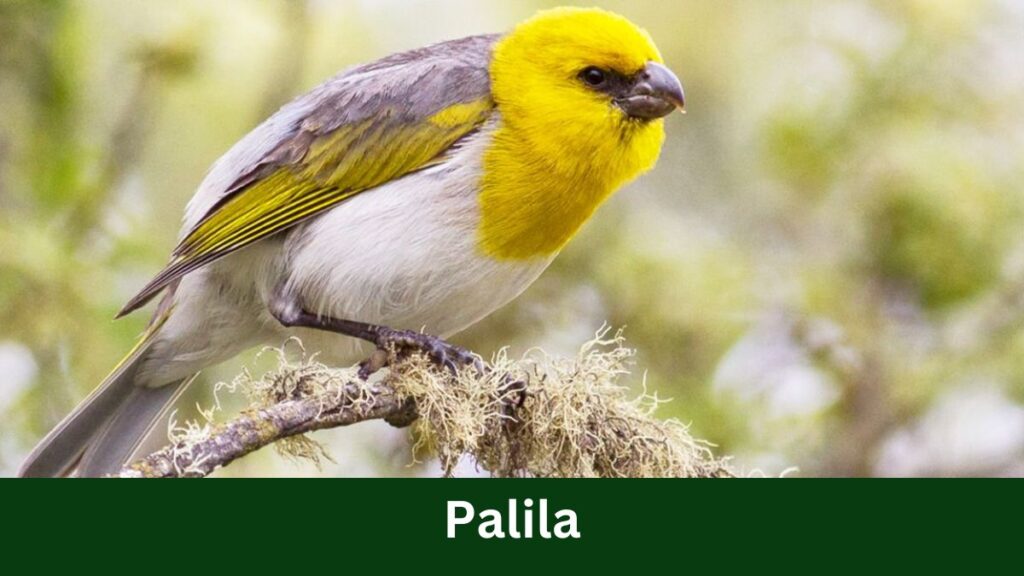
The Palila (Loxiodes bailleui), a native honeycreeper species with a broad, bulbous beak ideal for cracking open seedpods or fruit husks, is endemic to Hawaii species. The arid mountain slopes of Mauna Kea are where pailas are most frequently sighted, and their 2-3 note whistling call is frequently heard before the birds are clearly visible. Because the species of these birds are at risk of extinction, it is essential to maintain their preferred environment.
Erckel’s Francolin
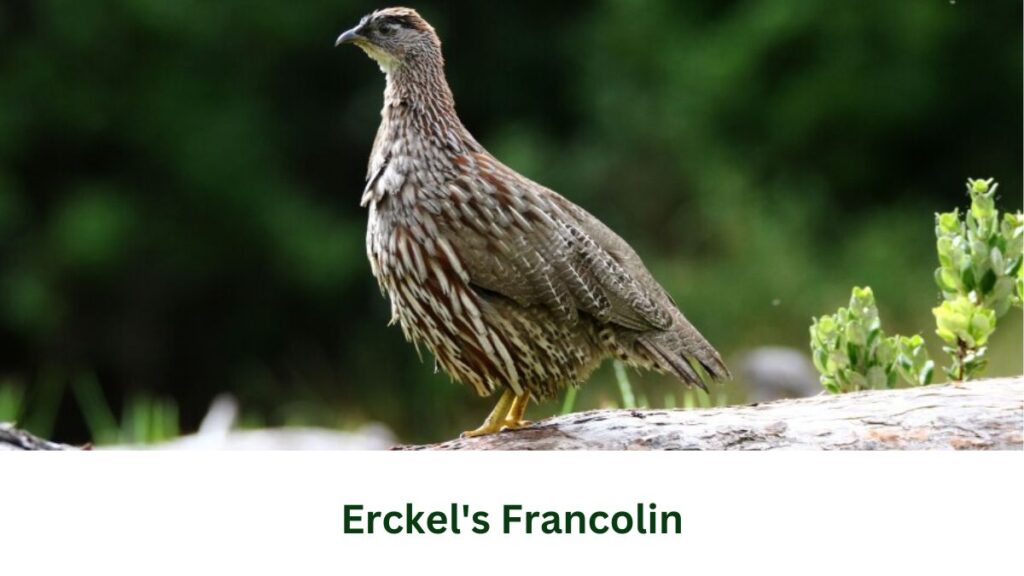
The Erckel’s francolin (Francolinus erckelii), which is a native of Ethiopia, Sudan, and Eritrea in northern Africa, was first introduced to Hawaii in 1957. Although they may be found on all of Hawaii’s main islands, these game birds prefer open grassland settings and are frequently seen in pastures, especially on Kauai and the Big Island. Identification is made simple by their striking patterns, obtrusive spherical shape, and unusual call, which has given them the moniker “laughing bird.”
Nene
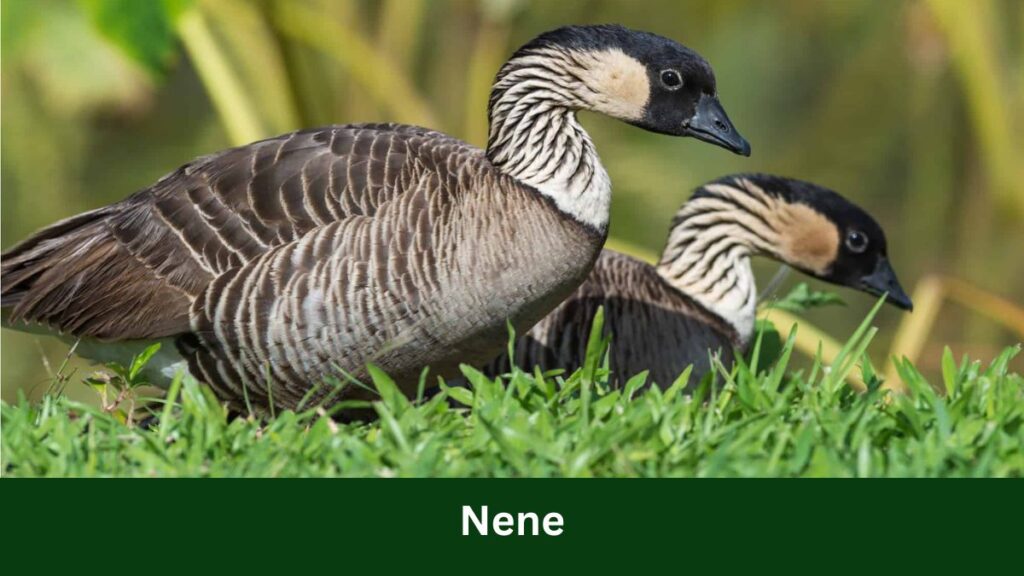
A trip to Hawaii wouldn’t be complete without seeing the nene, the state bird (Branta sandvicensis). Since they are native to Hawaii and are also threatened with extinction. Many birders who travel to the Aloha State seek them out. The good news is that they are well-protected and can be observed in a variety of locations, including Kauai, Maui, Molokai, and the Big Island. Although they may appear friendly in some places, it is preferable to leave nenes alone. Because doing so can result in harsh punishments.
Hawaiian Owl: Birds of Hawaii
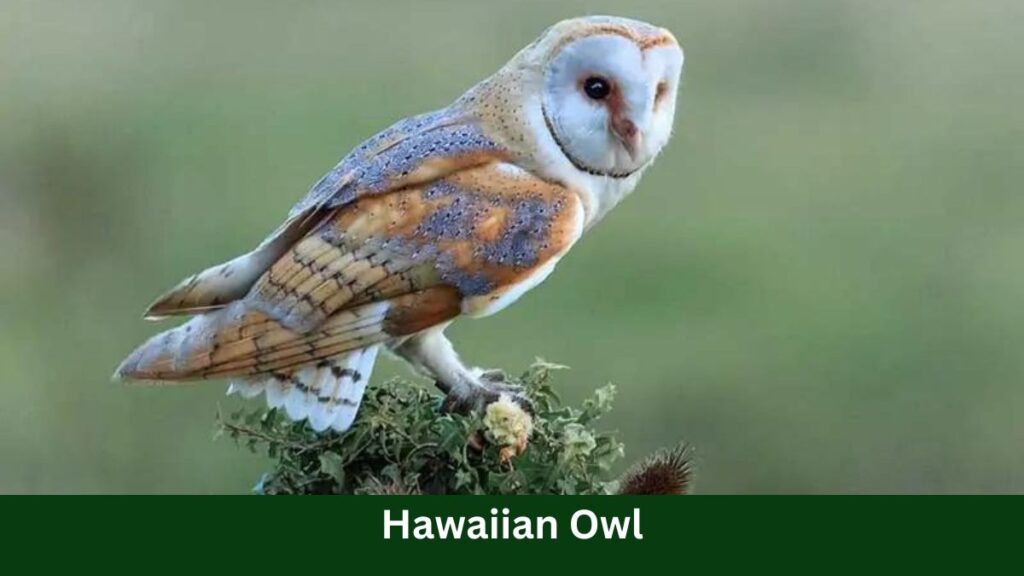
The Hawaiian owl (Asio flammeus sandwichensis), is an indigenous subspecies of the short-eared owl. Is one of the more difficult birds to sight in Hawaii. These birds are known as pueblos in the area, and they may be seen in pastures and open grasslands. Since those habitats make it easier for them to go hunting. They are mainly active at dawn and dusk, but they occasionally hunt during brighter daylight hours. Especially if there may be young owlets that need to be fed.
Western Meadowlark
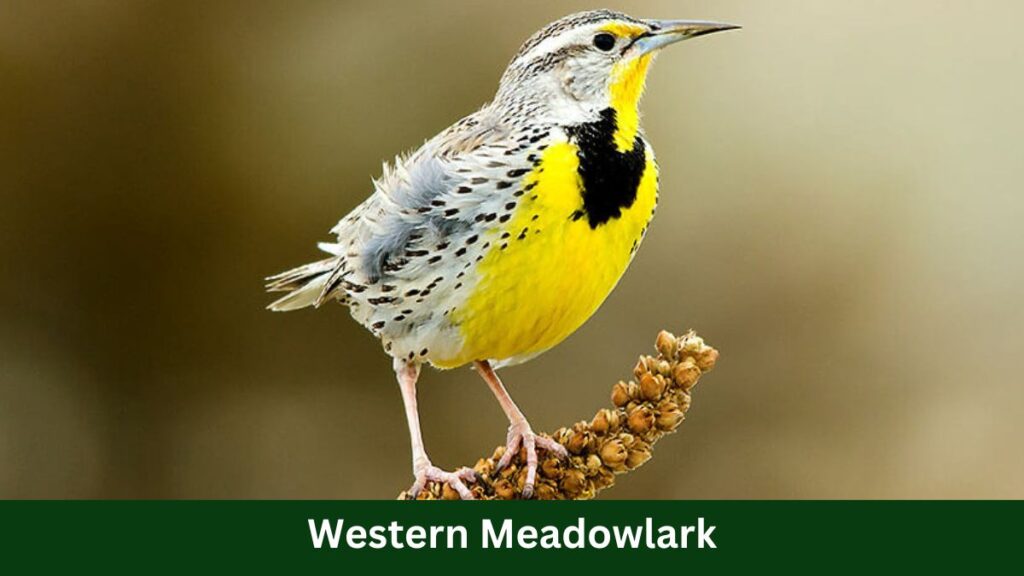
For birders, seeing a bird in Hawaii that is typically seen on the prairies and meadows of western North America can be unexpected. But since being brought to Kauai in 1931, the western meadowlark (Sturnella neglecta) has flourished. This grassland species is easily recognized thanks to its bright song. The habit of singing from open perches where birders can easily see it, and its striking black necklace.
Sharp-Tailed Sandpiper

The sharp-tailed sandpiper (Calidris acuminate), is one of the most vividly characterized and recognizable shorebirds. May be found in Hawaii on its wonderful beaches, making it an incredible spot to watch shorebirds. These birds breed in Siberia, spend the winter in Australia, and frequently stop in Hawaii while migrating to rest and refuel. The best sites to watch these migratory sandpipers are shallow ponds, wetlands, and mudflats, but they can sometimes be found on beaches, especially near river mouths.
Red-Footed Booby
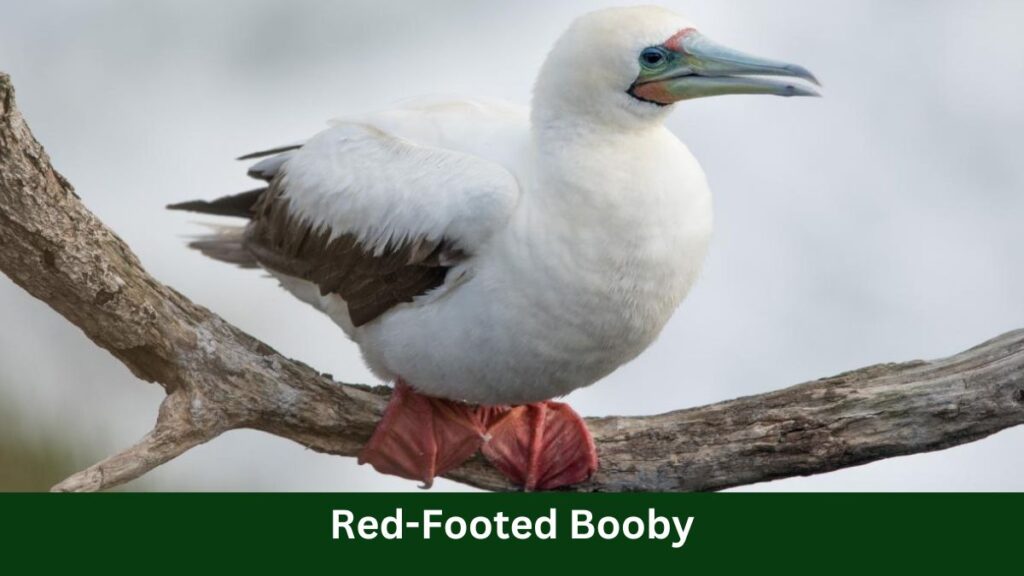
Of the three booby species found in Hawaii, the red-footed booby (Sula sula) is the most prevalent and is simpler to spot than the masked or brown boobies. This seabird’s vivid red feet are most vivid during the mating season and contrast wonderfully with its white feathers. The steep hillsides next to the lighthouse at Kauai’s Kilauea Point National Wildlife Refuge are the best places to observe these boobies. Where hundreds or thousands of pairs of birds may nest together in rookeries.
Pacific Golden-Plover
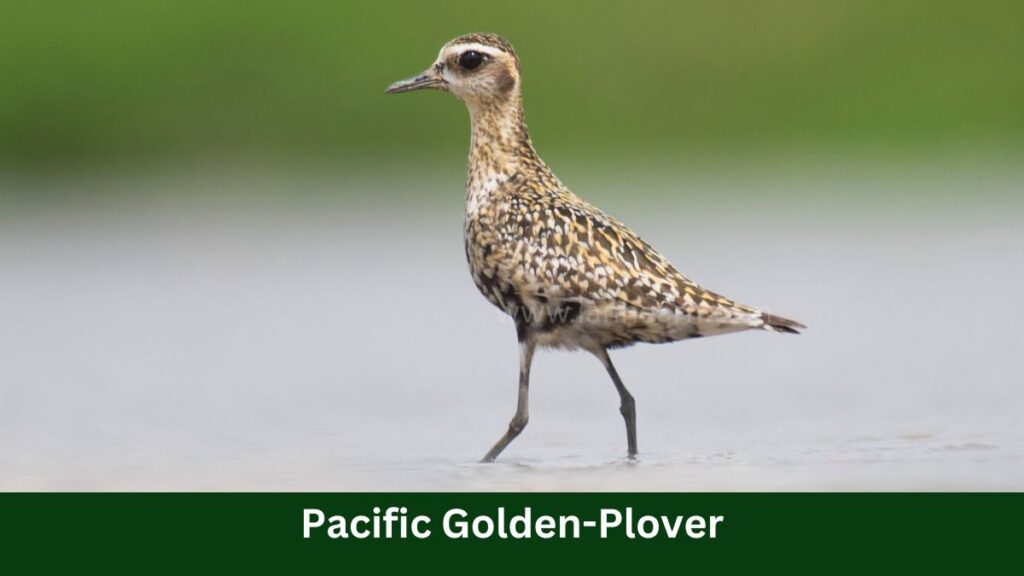
The Pacific golden plover (Pluvialis fulva), a brash, huge plover, is one of the most frequent winter visitors to Hawaii following the breeding season. Golf grounds, parks, and sports fields are just a few of the open locations where you can readily spot these birds. They usually fly into Hawaii in August and stay there until May. By this point, they’ve switched from their more concealed winter appearance to their striking breeding plumage.
White Tern: Birds of Hawaii
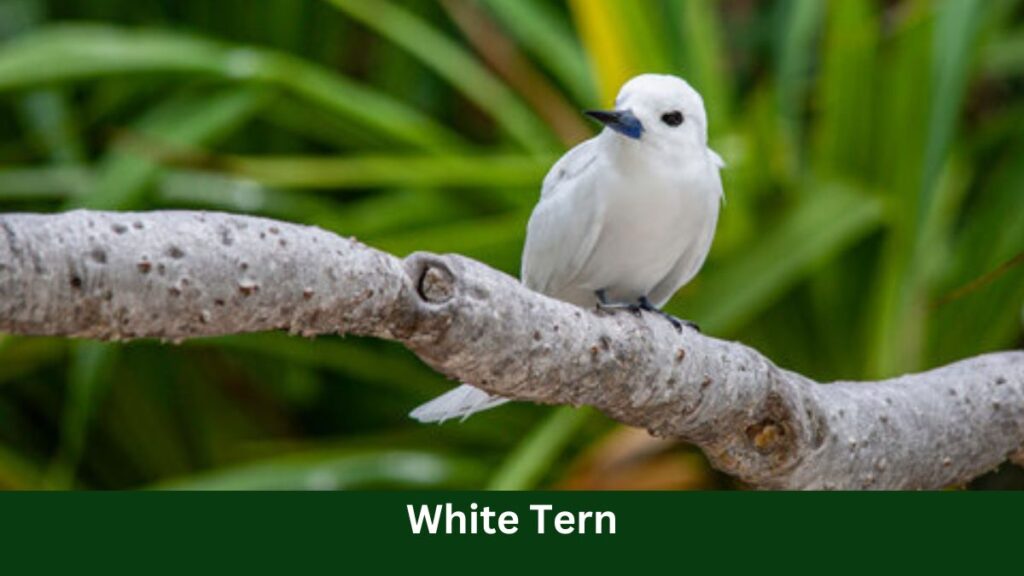
The white tern (Gygis alba) is a widely sought-after bird to observe in Hawaii due to its peaceful demeanor, naïve look, and all-white plumage. It favors big trees with thick horizontal branches for roosting and breeding and can be found in the northwest of the island chain as well as on the southern shore of Oahu. The branches are particularly crucial because each egg is immediately laid on a bare branch by these birds.
Bristle-Thighed Curlew
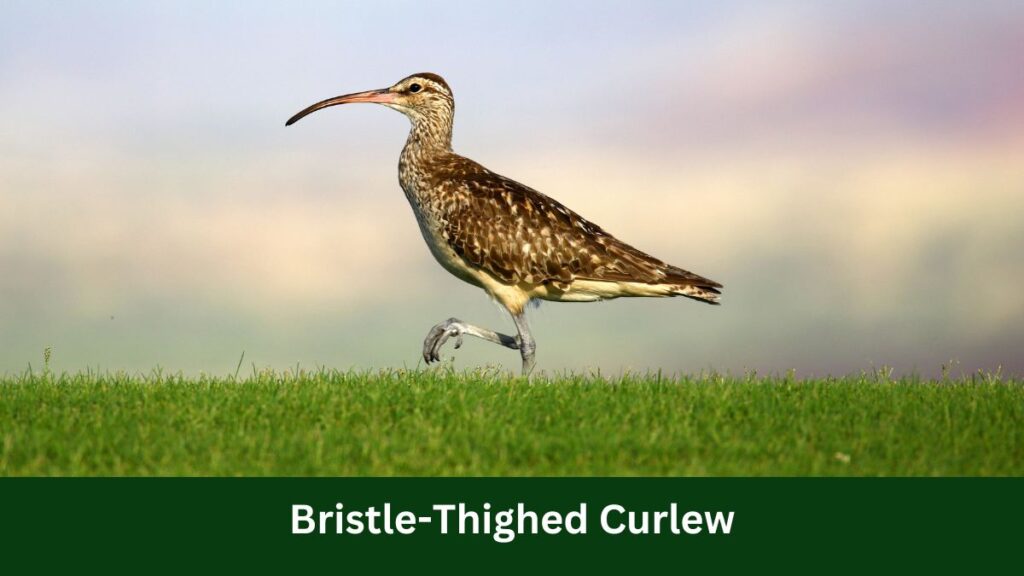
Large and reserved, the bristle-thighed curlew (Numenius tahitiensis) spends its winters mostly on Pacific islands, including Hawaii. The whimbrel, which is uncommon but frequently seen in Hawaii, could be confused with it due to its big size and long, deeply curled beak. The bill of the bristle-thighed curlew has more bends and is slightly bigger. This bird can be found in remote sand dunes as well as in short, grassy habitats.
Brown Noddy: Birds of Hawaii
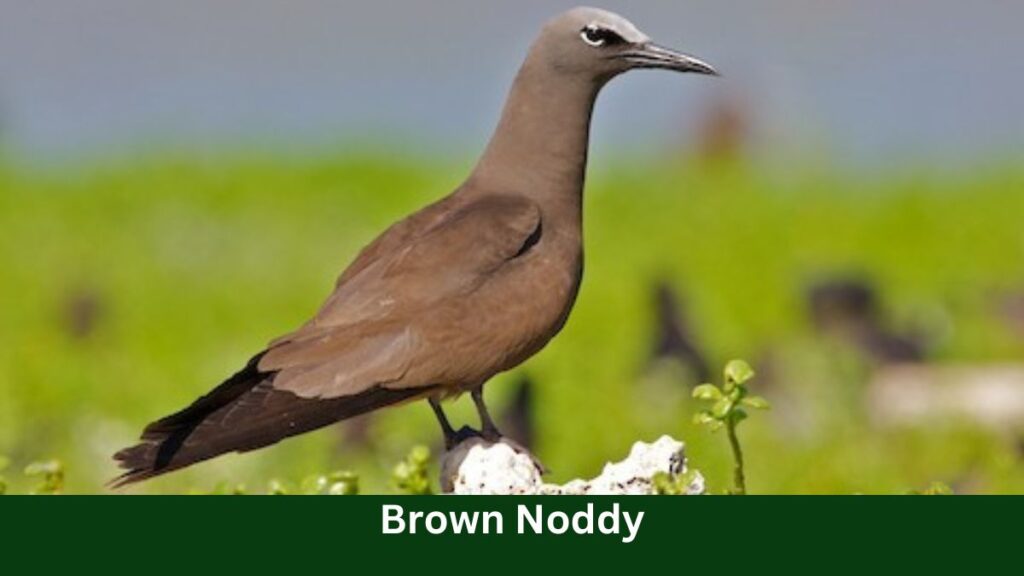
The brown noddy (Anous stolidus), a dapper-appearing bird with smooth plumage and subdued colors, builds its nest in Hawaii from May to August. Due to their striking appearance, these birds are simple to recognize, and their steady, deliberate flight style might aid in identification. Be careful not to mistake the indigenous Hawaiian noddy for brown noddies. However, Hawaiian noddies have orange-yellow legs and feet while brown noddies have dark legs and feet.
Common Myna: Birds of Hawaii
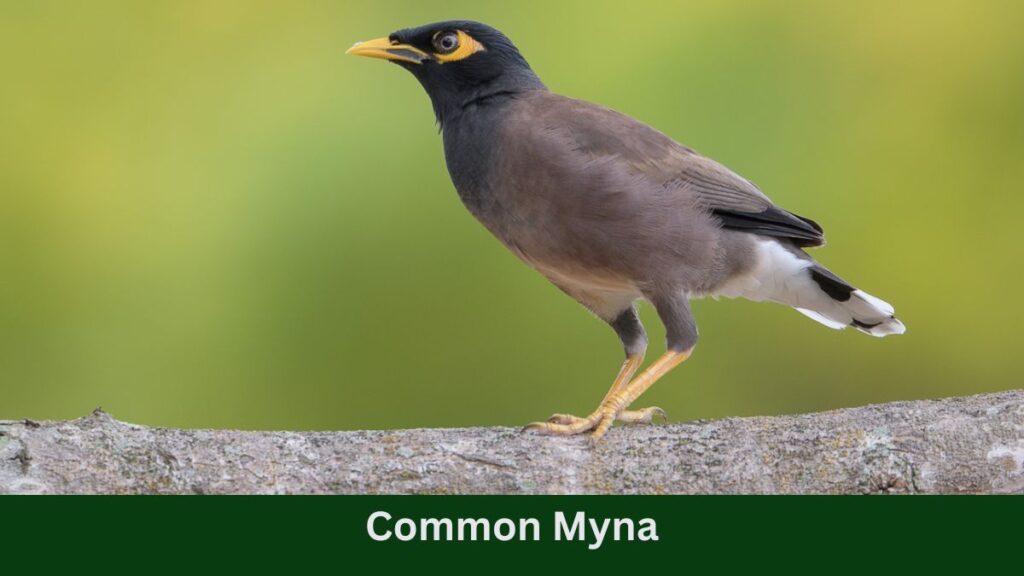
The common myna (Acridotheres tristis), is the most recognizable bird in Hawaii. Was brought to the islands from India in 1865. On all of the islands nowadays, it is common and may be seen strolling around parks, and gardens. And other urban and suburban areas. Due to successful introductions, this bird is also well-known in many other places, including Florida, Australia, New Zealand, Fiji, Madagascar, and South Africa.
Northern Cardinal
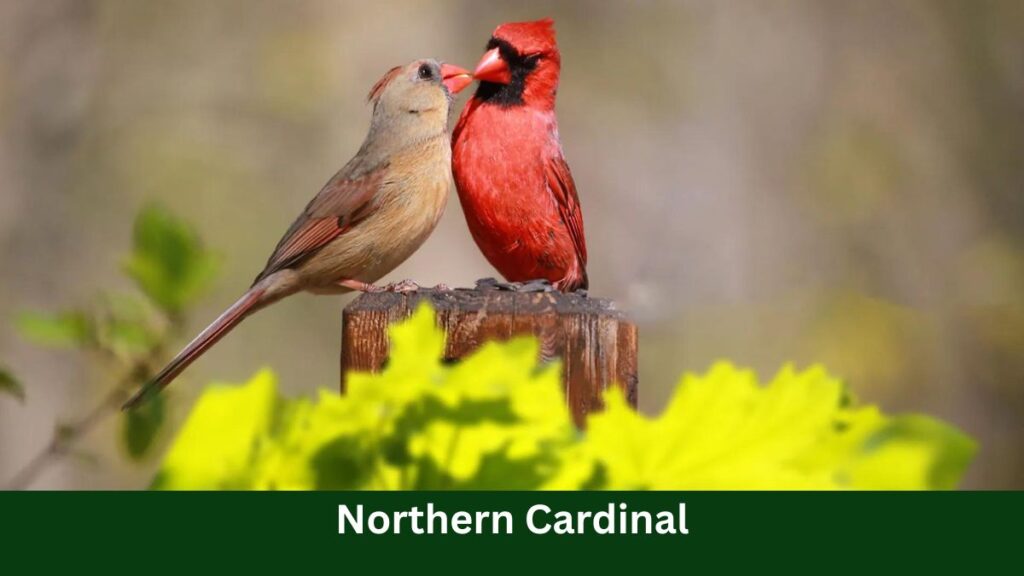
It is unexpected to observe the northern cardinal (Cardinalis cardinalis) in Hawaii. Especially for birdwatchers from eastern North America. Who may be best familiar with this vivacious red bird from their backyard feeders? The 1920s saw the introduction of the northern cardinal to Hawaii. Today it can be easily seen on all the major islands. Along with other exotic and native species, it cheerfully brightens birders’ yards and readily visits feeders.
Conclusion: Birds of Hawaii
Hawaii, a small group of islands in the Pacific Ocean, is home to some exquisite bird species. Among which some are endemic to the area. Since many of these local birds have vivid colors, it should be easy for you to see them in Hawaii as long as you have a good set of binoculars with you.

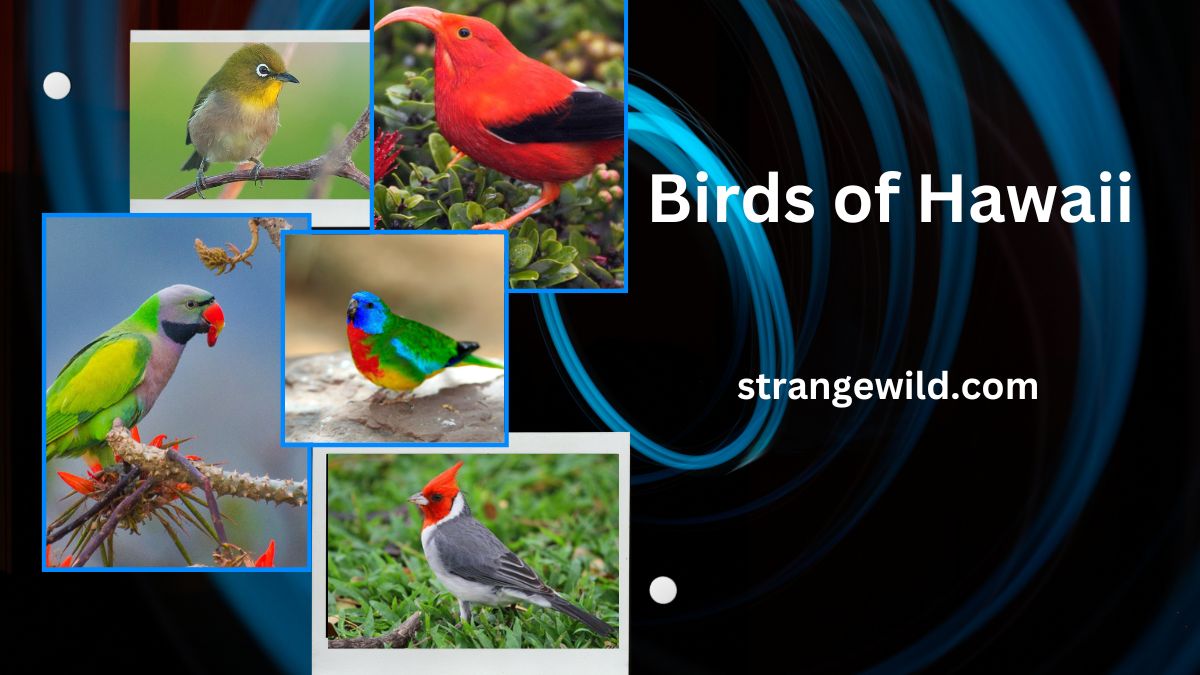




Your articles are extremely helpful to me. Please provide more information!